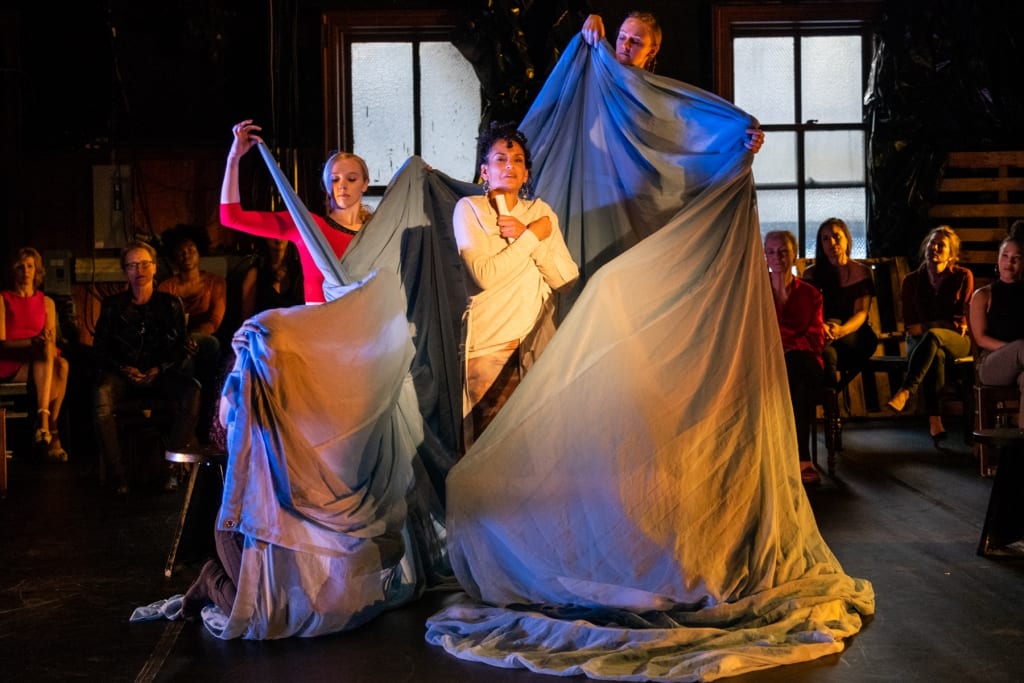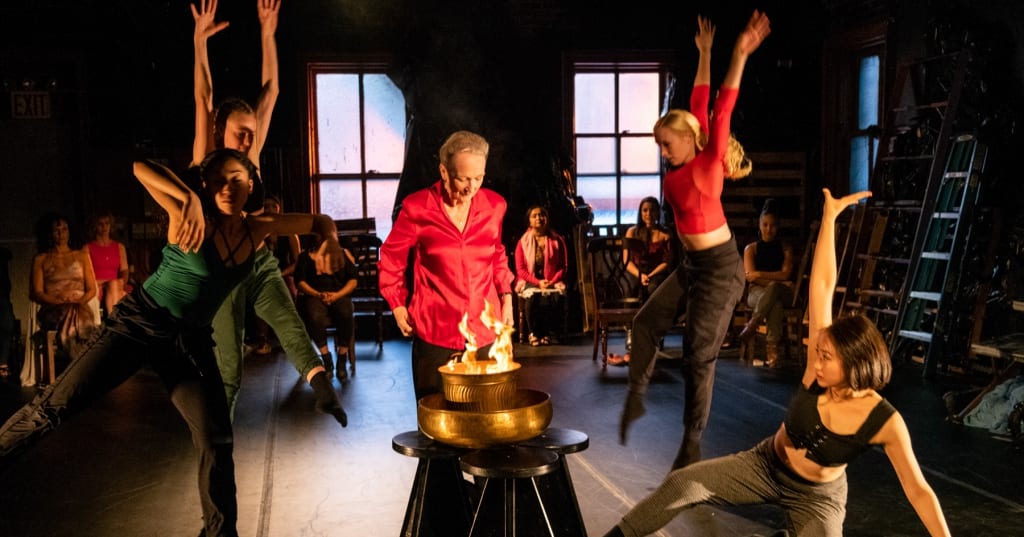Empowering. Strong. Proud. These were the words shouted by the audience after Royal Family Production’s performance of Women on Fire: Stories from the Frontlines. Associate Director Jessica Wu wanted to know how these women’s stories made the audience feel, as people and as women. Set in a small theater space above a church, the room hot and filled with smoke, audience full and packed in, it is hard not to feel a connection of power and empathy. Women on Fire combines dance and spoken word to tell the stories of twelve anonymous women who had been interviewed by writer and director Chris Henry, before burning away their scripts in an almost ritualistic cleansing. The first monologue truly sets the political, no-holds-barred tone for the evening when the woman declares she thinks about setting herself on fire in front of the White House so that finally someone will listen, and something will have to change. Cycling through different cultures and ages, the women reveal different forms of hurt they have felt from men, from other women, from former idols, and from presidents on both sides of the political line.
The work, while powerful and thought-provoking, is unfortunately clunky at times, a little rough around the edges. Many of the monologues last a few beats too long, belaboring their point and searching for a poignant beat instead of letting the message stand on its own the first time. Lorna Ventura’s choreography showcases the strength and beauty of the female body, but at times during other women’s monologues becomes distracting. The dancers burst onto the stage at the open of the show and it is impossible not to be in awe of the female body. However, the punk rock, post-apocalyptic look and aggressive movement rings of an overused image of an angry modern youth.

What is so fascinating about the showcase is the range of differing experiences and opinions being brought to the conversation. It speaks to a major component of second wave feminism – the recognition that not all women are the same, and their experiences and voices do not always match up under one umbrella. We see this clearly in a monologue in which a Latina woman calls out “stupid white girls” and their whining Me Too movement. She was taught by her parents how to stand up for herself and would rather focus on making changes in education, in wage gaps. Different cultures, ages, and races are given a voice through the monologues; however, it did stand out to me that woman of larger sizes or with disabilities are not represented.
Anger is a through line between the monologues, a helplessness in the face of what can we do now. This anger, the percussive beats, the staccato movements of the dancer, and the cleansing fire that connect Women on Fire build a cultish and ritualized atmosphere to the room that finally burst in the raucous applause and standing ovation that overcame the audience in the final moments. I return to the question asked at the end of the show: how did this make me feel? At times, angry; at times, connected; at times, very uncomfortable. I do not agree with all the messages I feel the show is trying to convey. But if theater like this does not challenge, does not make you uncomfortable, then what is the point? Hopefully this piece will inspire more conversations than just those amongst people who share the same opinions, and I like to think that is the point – to bring women of all kinds together, not to share one voice, but to listen to all different, female voices.

